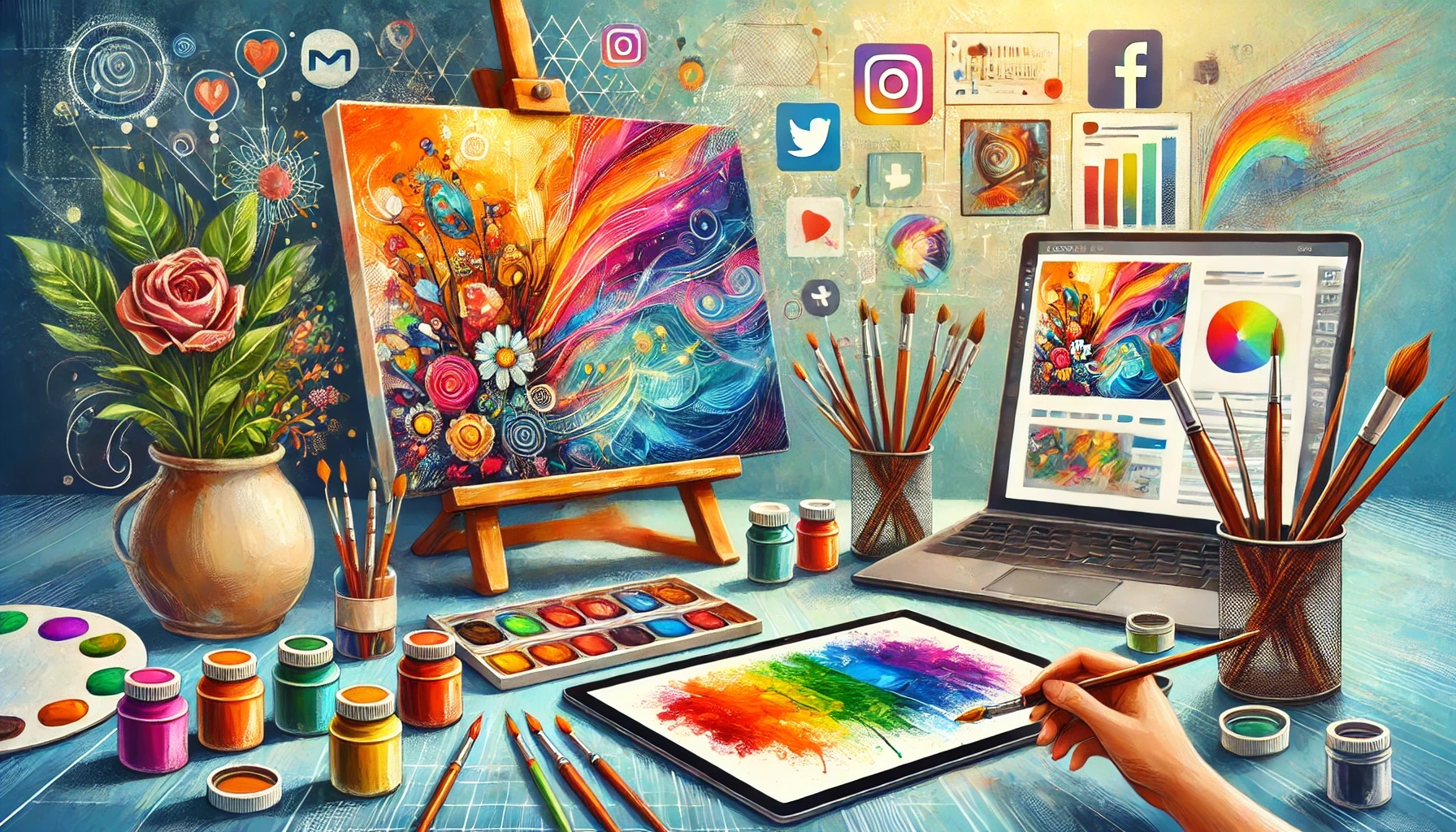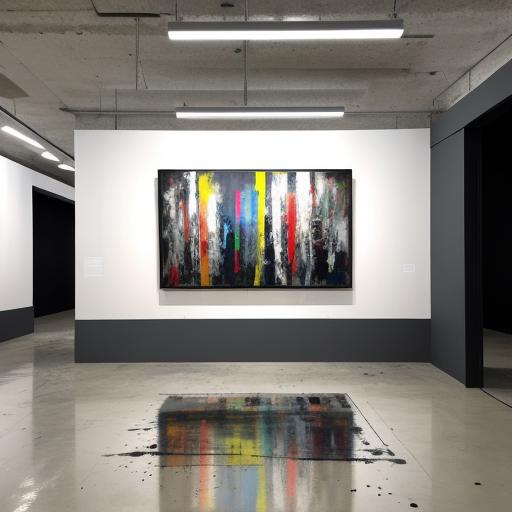Selling your art online might seem like a big challenge, but it’s actually a lot simpler than you’d think. Whether you’re into painting, drawing, or digital art, the internet is a fantastic place to share your creativity and even make some money. If you’re just starting out, don’t worry—this guide will walk you through everything you need to know to get your art out there and start selling. Let’s dive in!
1. Build Your Art Portfolio
Before you can sell your art, you need to show it off in a way that catches people’s attention. Think of your portfolio as your personal online gallery. It not only showcases your style and skills but also helps build trust with potential buyers by presenting your work professionally and consistently. Here’s how to create one that stands out:
First, choose your best pieces. You don’t need to include everything you’ve ever made—just pick 10-15 works that really represent your style and skills. Quality matters more than quantity.
Next, make sure your art looks its best. Take clear, well-lit photos of your work. Natural light works wonders, and avoid any glare or shadows that might distract from the piece. If you’re selling digital art, make sure the files are high resolution.
Finally, add some details about each piece. Include the title, the medium you used (like acrylics or watercolors), the size, and a little bit about what inspired you to create it. This helps potential buyers connect with your work on a deeper level.
2. Choose the Right Platform
There are so many places to sell art online, and each one has its own perks. Here are a few popular options to consider:
- Etsy: If you’re into handmade or unique items, Etsy is a great choice. It’s easy to set up a shop, and there’s already a huge audience of people looking for one-of-a-kind pieces.
- Instagram: This platform is perfect for sharing your work, building a following, and connecting with potential buyers. To optimize your profile for sales, add a link in your bio that directs viewers to your shop or portfolio. Use Instagram Stories and Highlights to showcase your best work, announce promotions, or provide behind-the-scenes content to engage your audience. Plus, it’s free to use!
- ArtStation: For digital artists, ArtStation is a popular platform where you can showcase and sell your work. It’s especially great if you’re into illustration, game design, or animation.
- Your Own Website: If you want full control over your shop, consider creating your own website. Platforms like Shopify or Squarespace make it easy to set up a professional-looking site where you can sell your art directly.
3. Price Your Art Fairly
Figuring out how much to charge for your art can be tricky, but it’s important to get it right. Here’s a simple way to start:
First, calculate the cost of your materials. Add up everything you used to create the piece, like canvas, paint, or brushes.
Next, think about how much time you spent on it. Decide how much you want to earn per hour and multiply that by the number of hours you worked.
Finally, do a little research. Look at what other artists with similar styles and experience are charging. Research pricing on multiple platforms, such as Etsy, ArtStation, or personal websites, to get a broader perspective on market trends. This will give you a good idea of what buyers are willing to pay.
See our free calculator and tips to price your paintings
When you’re just starting out, it’s okay to set lower prices to attract your first customers. As you gain more experience and build a following, you can gradually increase your prices.
4. Write a Great Artist Bio
Your artist bio is your chance to tell your story and connect with potential buyers. Keep it short and sweet, but make sure to include:
- Who you are and where you’re from.
- What inspires your art.
- Any awards, exhibitions, or special achievements.
Here’s an example:
“Hi! I’m Sarah, a self-taught painter from California. I love creating vibrant landscapes inspired by nature. My goal is to bring a little bit of the outdoors into your home!”
A well-written bio helps buyers feel like they know you, which can make them more likely to support your work.
5. Promote Your Art on Social Media
Social media is one of the best tools for artists. Beyond Instagram, platforms like Pinterest are excellent for sharing visually striking work, while TikTok allows for dynamic, short-form videos to showcase your creative process. LinkedIn can also be surprisingly effective for connecting with professional buyers or collaborators in the creative industry. It’s free, easy to use, and lets you reach a huge audience. Here’s how to make the most of it:
Post regularly to keep your followers engaged. Share your finished pieces, works in progress, and even behind-the-scenes photos of your creative process.
Engage with your audience by replying to comments and messages. Building a community around your art can lead to loyal fans and repeat customers.
Use hashtags to help more people discover your work. Try ones like #ArtForSale, #SupportArtists, or #BuyLocalArt to reach the right audience.
6. Offer Different Types of Art Products
Not everyone can afford an original painting, but they might still want to support you by buying something else. Here are a few ideas:
- Prints: These are affordable for buyers and easy for you to produce. Just make sure to use high-quality printing services.
- Merchandise: Create items featuring your art, like T-shirts, mugs, or tote bags. These are great for fans who want to show off their love for your work.
- Custom Commissions: Let customers request personalized pieces, like a portrait of their pet or a painting of their favorite place.
7. Provide Excellent Customer Service
Happy customers are more likely to recommend you to others and come back for more. Here’s how to keep them satisfied:
Communicate clearly and respond to questions quickly. If someone’s interested in your art, make sure they feel valued and heard.
Package your art carefully to protect it during shipping. Use bubble wrap, sturdy boxes, and plenty of padding to prevent damage.
Include a thank-you note with every order. A small gesture like this can make a big impression and leave buyers feeling appreciated.
8. Keep Learning and Improving
Selling art online is a learning process, and there’s always room to grow. Here’s how to keep getting better:
Ask for feedback from your customers. Find out what they love about your art and what you can improve.
Experiment with new styles, mediums, or subjects. For example, one watercolor artist who usually painted landscapes started experimenting with abstract themes. The shift not only reinvigorated their creativity but also attracted a new audience who appreciated the bold departure from their usual work. Trying new things can help you grow as an artist and keep your work fresh.
Stay consistent. Keep creating and sharing your art, even if sales are slow at first. Success takes time, but every step forward is progress.
9. Connect with Other Artists
Networking with other artists can help you learn, grow, and even find new customers. Here’s how to get started:
Join online communities for artists. Participate in forums, Facebook groups, or Reddit threads where you can share your work and get advice.
Attend local art events, like shows, galleries, or workshops. Meeting other artists in person can lead to valuable connections and opportunities.
Collaborate with other artists on projects or promotions. Working together can help you reach new audiences and learn from each other.
10. Be Patient and Keep Going
Selling art online takes time, so don’t get discouraged if you don’t see results right away. Keep creating, promoting, and improving. Remember, every successful artist started somewhere.
The most important thing is to enjoy the process. Art is about expressing yourself and sharing your creativity with the world. If you stay passionate and persistent, the rest will follow.
Final Thoughts
Selling your art online is an exciting journey that lets you share your creativity with the world. By following these tips, you’ll be well on your way to building a successful art business. Remember, the key is to keep creating, stay consistent, and enjoy the process.
Now it’s your turn! Start setting up your online art shop today and see where your creativity takes you.



